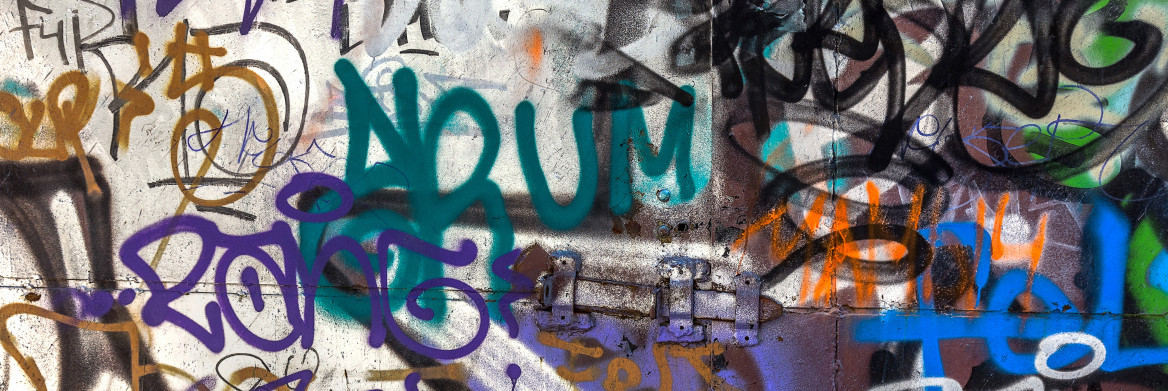Graffiti vandals may believe their actions harm no one. But the reality is graffiti sends the message that nobody cares, it attracts other forms of crime and it decreases residents' feelings of safety. Graffiti is also costly, draining tax dollars for cleanup, and results in reduced property values, business growth and tourism. The following facts paint a clear picture of the ugly side of graffiti.
- The term graffiti comes from the Greek word graphein, which means "
to write.
" Graffiti ranges from simple, one-colour monikers called "tags
" repeated on many surfaces, to complex compositions of several colours. - Graffiti Hurts, a grassroots community education program in the United States, describes three main types of graffiti: gang, hate and generic (non-threatening messages like "
Bobby loves Suzy
"). - According to the U.S. National Council to Prevent Delinquency (NCPD), about 80 per cent of graffiti are "
tagger
" or "hip-hop
" style, five per cent are large visuals and 10 per cent, or more, are gang related. - The NCPD describes a "
tag
" as a graffiti vandal's moniker applied quickly and repetitively. A "throw-up
" is a more elaborate tag, usually done in two or more colours. "Pieces,
" short for "masterpieces,
" are large, detailed multi-colour drawings that may take an hour or more to complete. - Unlike tagger graffiti, the NCPD reports that gang graffiti is used to mark gang territory, list members, offer drugs or contraband for sale or send warnings to rivals. Gang tags may include letters, symbols or numbers known only by gangs and law enforcement.
- Graffitihurts.org reports that most American studies show the majority of taggers are male between the ages of 12 and 21, while approximately 15 per cent of graffiti vandals are young women.
- Under the Criminal Code of Canada, the creation of graffiti is considered vandalism. Vandals can be charged with "
mischief under or over $5,000.
" - Graffiti is the most common type of property vandalism, accounting for 35 per cent, according to the U.S. Bureau of Justice Statistics.
- Graffiti vandalism is a bylaw infraction in cities across Canada. In major cities such as Toronto, Vancouver, Montreal and Calgary, property owners are required by law to remove illegal markings.
- In 2013, the Globe and Mail reported on the City of Toronto's comprehensive graffiti management plan. The program shifts the focus from simple graffiti removal to prevention, largely through youth and community outreach programs.
- Graffitihurts.org reports that the City of Phoenix, AZ, spends more than $6 million annually on graffiti cleanup, Las Vegas, NV, spends about $3 million annually, and Chicago, IL, budgeted $6.5 million in 2006.
- Ideological or hate graffiti is any racial, religious or cultural slur. According to Statistics Canada, of the 1,401 hate crimes reported in Canada in 2010, the most common type was mischief, in the form of graffiti or vandalism.
- There are four primary motivating factors for graffiti vandalism: fame, rebellion, self-expression and power, according to graffitihurts.org.
- According to a 2009 CBC News report, legal graffiti walls are sanctioned walls intended to reduce unwanted graffiti in neighbourhoods. While well intentioned, legal walls often appear to work at first, but after a period of time, the surrounding areas also become covered with graffiti.
- The City of Vancouver's Integrated Graffiti Management Program reports that while legal walls can act as a deterrent to graffiti, in the last couple of years, many Vancouver murals have been vandalized.
